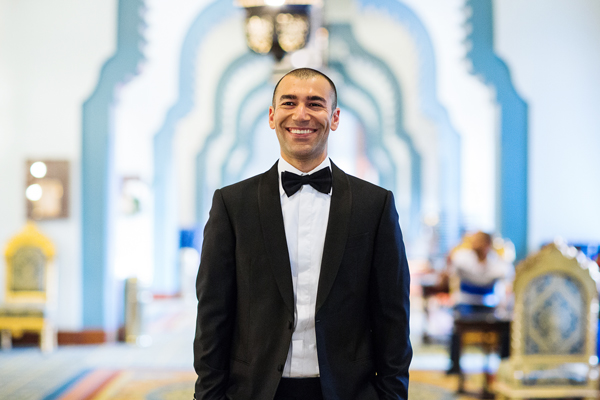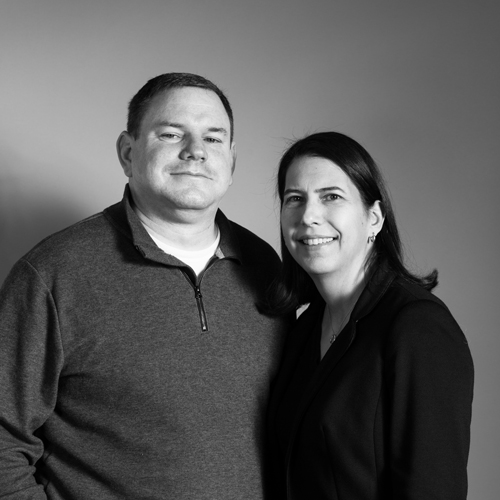
Allam Taj, director and associate general counsel for Citigroup, breathes mergers and acquisitions. He’s been busy for a number of years negotiating proprietary transactions for Citi across North and South America, Europe, Asia, and Africa. His work has taken him to many countries, where he has helped come up with novel structures under local law to effect the transactions.
He also advises Citi Ventures on strategic, commercial, and legal issues related to innovative initiatives and partnerships that have the potential to transform the future of financial services. Citi is embracing new technologies and innovation, which makes this a particularly exciting time for the company.
Taj has also worked on strategic projects from time to time, including a recent big one: Citi’s M&A legal team and specifically Taj, with his global M&A experience, were given a key role in developing a holistic, detailed divestiture strategy for Citi’s global businesses in its most recent resolution plan. The plan, required of all big banks by the federal government in the aftermath of the 2008 financial crisis, describes Citi’s strategy for rapid and orderly resolution in the event of the company’s financial distress or failure. The strategy for and related analysis of the plan were significant undertakings that required a deep understanding of the legal structure, operations, contractual relationships, and regulatory and legal landscape of each of Citi’s businesses that collectively operate in more than a hundred countries.
Taj’s passion for M&A began during his time as an undergraduate, at Temple University, where he majored in finance and accounting. Then, in law school, at the University of Pennsylvania, he focused his studies on corporate law while completing all three levels of the chartered financial analyst program. After graduating, he first joined the law firm Skadden Arps, where he worked on a number of large-scale M&A transactions, and then he joined Citigroup as M&A counsel.
With his extensive experience, Taj has a great deal of knowledge that would likely be helpful to any in-house M&A lawyer embarking on a major transaction. Here, he shares a few key imperatives.
Be a Partner to the Business
Having worked on large-scale M&A deals both as an outside counsel and in-house for Citi, Taj has had the opportunity to see how different companies approach the internal M&A legal function. “In some organizations, M&A legal is thought of as an execution function that just takes care of the agreements,” he says. “But an M&A counsel should have a bigger and more important decision-making and advising role.”
Taj has been able to take on such a role by finding ways to partner with Citi’s businesses and bankers in order to add real value to their transactions. “If a counsel positions herself as a solution-oriented, commercially minded critical thinker, then others will come to the counsel for strategic advice and will seek her input in all key decisions,” Taj says.
Stay Organized and Take Ownership
“You need to have a game plan for doing the work,” Taj says. “Everyone expects you, as internal M&A counsel, to be on top of the issues because the ultimate ownership for all legal decisions rests with you. Being organized makes it easier to manage the process and prevents issues from slipping through the cracks.”
When Taj and his team worked on Citigroup’s resolution plan, for example, they came up with a comprehensive project plan that allowed them to complete all phases of the work, including development of sales structures, review of agreements, and analysis of local law, in a timely manner. “It was no small undertaking,” Taj says, “but the preparation paved a much smoother road for the project, which allowed us to deliver a quality work product.”
Communicate and Partner Externally
According to Taj, when negotiating any M&A deal, it’s crucial to establish a good rapport with the counsel on the other side of the table. “That kind of goodwill goes a long way in negotiations because it leaves room for productive side discussions,” he says. “I’ve worked on transactions where negotiations came to a standstill due to impasses over critical issues. Because of the relationship I had with counsel on the other side, though, we were able to come up with solutions that got the negotiations back on track. The business and bankers view this as a value add and appreciate having this additional channel to resolve issues.”
Think Ahead and Be Creative
One of the things Taj enjoys most about M&A work is that every deal gives him a chance to learn about a new business and meet new people. “Every deal requires you to roll up your sleeves and dive in to learn the business from the inside out,” he says.
And, because of the nuances of each transaction, there’s a lot of room for creativity and out-of-the-box thinking. “Eighty percent of a typical transaction generally centers on the same set of issues, but the remaining 20 percent, which requires finding creative solutions that achieve the deal objective and are acceptable to all parties, is where all the fun is,” Taj says. “That is often what makes or breaks a deal.”
And, it’s important to continuously reassess the leverage dynamic and what the other party’s bottom line is with respect to any given issue. “M&A is like a game of chess,” Taj says. “You always have to be thinking a few steps ahead and anticipating how the other side will respond.”
Remember That Anything Can Happen
Ultimately, there’s plenty about a deal that can’t be predicted, but according to Taj, the best anyone can do is be prepared for all potential outcomes. “It’s important to expect the unexpected,” he says. “In any type of M&A transaction, something always happens at the eleventh hour that has the potential to jeopardize the deal. But, at the end of the day, there is a solution to almost every problem if you think hard enough, so think creatively, keep a cool head, and stay focused on getting to the finish line.”

